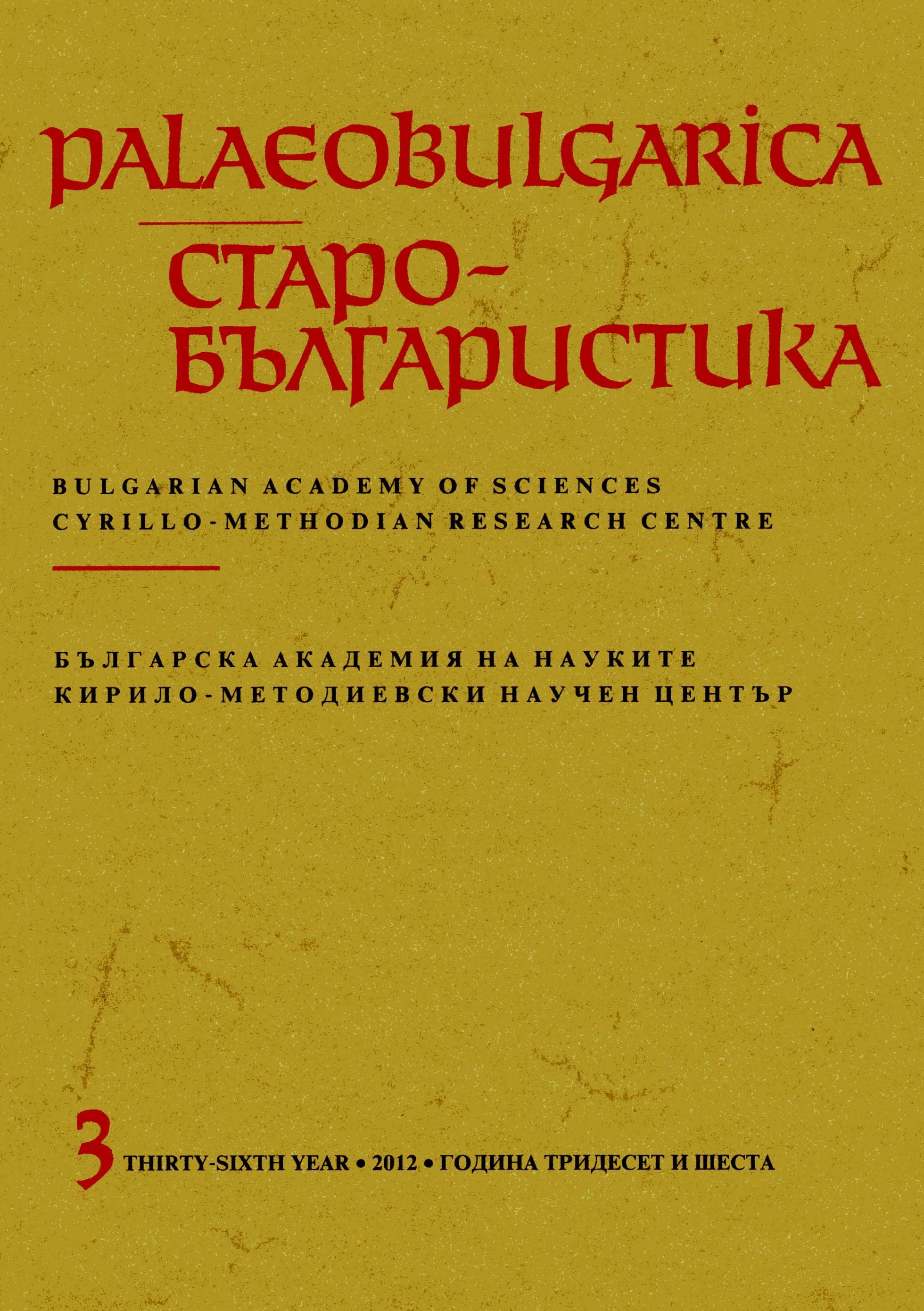Легендарната история на Света гора в един печатен апокриф от Венеция (1571–1572)
The Legendary History of the Holy Mountain in One Printed Apocryph from Venice (1571-1572)
Author(s): Mariyana Tsibranska-KostovaSubject(s): Language and Literature Studies, Middle Ages
Published by: Кирило-Методиевски научен център при Българска академия на науките
Summary/Abstract: The article focuses on the fragment relating the legendary history of Mount Athos in the printed apocryphal version of the Dormition of the Theotokos, which was inserted in the miscellany Book for various occasions of the first Bulgarian printer Yakov Kraykov (Venice, 1571-1572). The fragment represents an unknown version of the story of the Virgin's visit to the Holy Mountain supplemented with several topographic details, leading directly to the Greek sources of the so called Patria Athonensia. This Athonite legend is preserved in Slavonic translations and revised versions, and acquired official status in the book "Raj myslennyj" [Paradise of Thought], published in 1659 under the sponsorship of the Russian patriarch Nicon where it was merely a part of the Legend of how, why and when the Athonite mountain was sanctified, ascribed to Stephan the Hagiorite. It is remarkable that the Athonite legend was taken up in the 16th century when the printed Slavonic version of Yakov appeared. Thus, the fragment from Yakov Kraykov's printed apocryph in the Book for various occasions is a very rare testimony of how the Athonite motif of the Virgin's visit was adopted in the Slavonic literary tradition. Whatever its sources, the printed version acquired particular importance as a linking piece between the Greek and the Slavonic tradition of the Athonite legend. With its precise dating and localization, with all the specific textual and linguistic peculiarities of this redaction, and the historical environment it appeared in, it deserves special scholarly attention both in the context of Yakov's miscellany and outside of it, as an independent interpretation of the Theotokos motif. The author offers a key to a comprehensive analysis in the context of the Cyrillic printed tradition in 16th century Venice.
Journal: PALAEOBULGARICA / СТАРОБЪЛГАРИСТИКА
- Issue Year: 2012
- Issue No: 3
- Page Range: 104-124
- Page Count: 21
- Language: Bulgarian
- Content File-PDF

